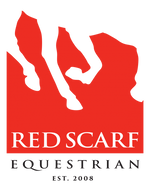By Samantha King
Show season is over for most riders, except for the lucky few attending the Royal and/or going South for the winter months.
For the average competitor at the end of show season some questions arise as to what circuit to show next year, what division to show in and what mount will be suitable. Maybe your lease is coming to an end and you have to decide to renew or look for a new mount.
If you need to look for a new mount you will have the help of your coach and friends, but then how do you get connected to this new creature? OR How can you reconnect and build a deeper bond with the same equine partner before next show season?

Spending some non-riding time with our horses is so important to building that connected partnership, but many riders and coaches often overlook this opportunity.
We spend so much time riding, learning new skills and finding out what our horses respond to, but we should also consider spending some time on the ground with our horses. Spending some non-riding time with our horses is so important to building that connected partnership, but many riders and coaches often overlook this opportunity.
[The pony my daughter was riding] would perk up his little ears, pop his cute face over the stall door and would even nicker when she came to the barn.
One of my daughter’s coaches once told her that her pony will want to spend more time with her and give her what she asks of him for a few daily belly scratches. That small gesture means more to that pony than we realize. She showed that pony for 2 years and did very well on him when other kids had trouble getting him to do what they wanted. Aside from her tenacity as a rider, that pony was eager to see her when she walked in the barn. He would perk up his little ears, pop his cute face over the stall door and would even nicker when she came to the barn. She rarely gave him food treats (I am not a big supporter of food as treats for animals), but she did know the spots he loved to be scratched and she did talk to him about how amazing he was and how great they were together as a partnership. This built such a strong connection between them that they grew their confidence together and achieved success.

A pony once arrived at my farm newly purchased by a client. He came with a reputation of being “naughty”, refusing fences and being spooky. We saw this behavior in him and realized quickly that this wasn’t because he was a “naughty” pony, but that he was not connected or trusting of his people or his environment. When he was given the opportunity to work in a round pen he took a long time to connect and relax with the trainer. This trainer said that wild horses have taken much less time to connect. It was obvious that this pony didn’t trust humans to keep him safe and comfortable. Eventually, through lots of groundwork and then riding retraining, this pony made a complete turn around and became a lovely mount for kids to ride for pleasure and show.
While this was an extreme case, both cases demonstrate that once we gain the trust of our horses and ponies on the ground, within non-riding time, they give us so much more of themselves. We truly want them to trust us and we want to trust them. When we need them to move up and take that long distance to a jump, or to step into a puddle, we need to trust that they will give that extra effort. If you have taken the time to build that connection, you can put more trust that they will.
Spend some quality non-riding time with your horse; graze them, find the spot they enjoy a scratch or massage, learn some stretching exercises or learn how to do some connection work in a round pen. Many resources and trainers are available to help with these ideas and concepts so please check with your coach or barn manager as to what is appropriate for you and your horse.
If you are prepared to invest some extra time you will enjoy making that connection and developing a deeper bond. The trust you build will definitely garner bigger effort from your equine partner and both of you may experience a new level of happiness!
WHO IS SAMANTHA KING?
 At the height of her business, she had many horses and students competing in eventing and hunter/jumper on the schooling, Trillium and A Circuits. Aside from her own stables in Oakville and then Georgetown, Samantha has taught riding at Sunnybrook Stables (Toronto), The Riding Academy at the Horse Palace (Toronto), Southlands (in Vancouver), and Stonewood Riding Academy (Pickering). She continues to be involved with horses as the Mum of an 11-year-old rider who competes on the Trillium Circuit, judging a few schooling shows and loves to teach whenever she can!
At the height of her business, she had many horses and students competing in eventing and hunter/jumper on the schooling, Trillium and A Circuits. Aside from her own stables in Oakville and then Georgetown, Samantha has taught riding at Sunnybrook Stables (Toronto), The Riding Academy at the Horse Palace (Toronto), Southlands (in Vancouver), and Stonewood Riding Academy (Pickering). She continues to be involved with horses as the Mum of an 11-year-old rider who competes on the Trillium Circuit, judging a few schooling shows and loves to teach whenever she can!





Leave a comment